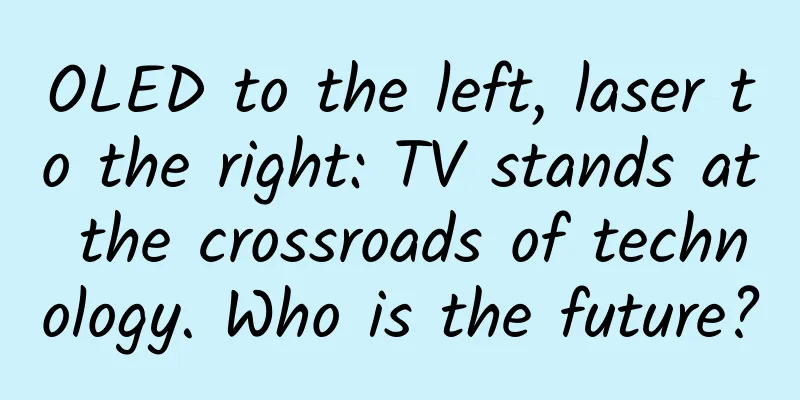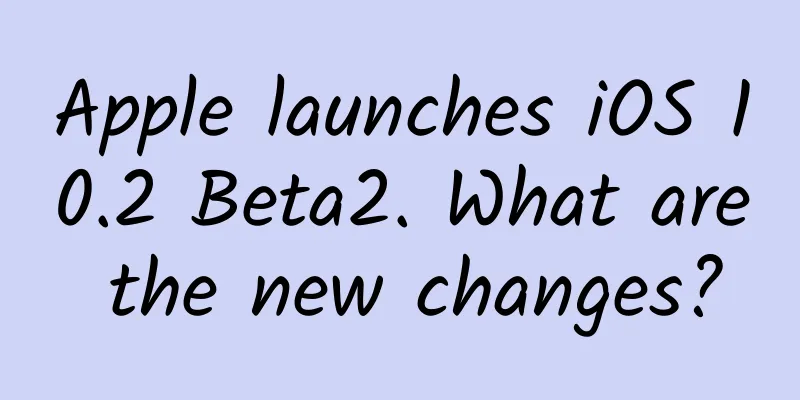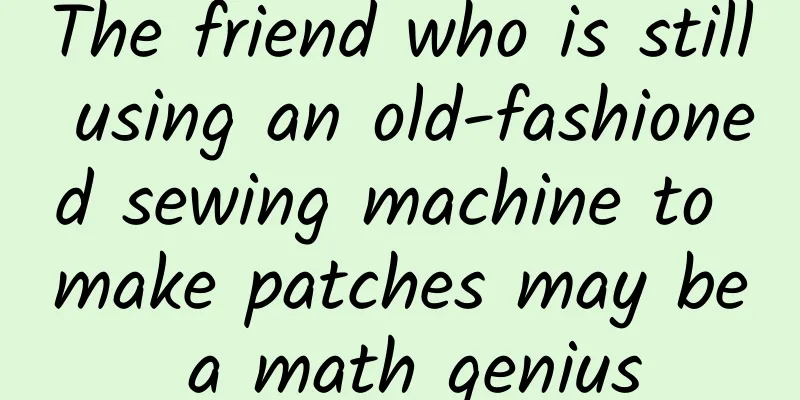OLED to the left, laser to the right: TV stands at the crossroads of technology. Who is the future?

|
Not long ago, Wang Sicong, the most famous second-generation rich man in China and a member of the disciplinary inspection committee of the entertainment industry, posted a photo of his newly purchased 100-inch Sony Z9D TV on Weibo. The price of this TV is as high as 500,000 yuan, so it's no wonder that even President Wang wanted to show off. But is it really appropriate to buy this Sony TV at such an expensive price? Hisense gave a negative answer. Hisense has always had a special liking for ultra-large screen TVs, and satisfying users' dream of watching movies without leaving home is what Hisense has always pursued. At the same time, for the ultra-large LCD screen solution whose cutting process is not yet mature, the laser TV technology advocated by Hisense seems to be more down-to-earth. Compared with Sony Z9D, which is also a 100-inch 4K ultra-large screen TV, Hisense DLP ultra-short-throw laser TV is priced at only 70,000 yuan, and Hisense laser TV is also much easier to install and transport. Indeed, as users have higher demands on TV size, laser projection TVs have achieved a delicate balance between price and effect. In the absence of substantial technological progress, the high cost of LCD TVs will be difficult to control. The battle between LCD and plasma began more than a decade ago and has now come to an end. However, the industry generally believes that the TV market is now once again at the crossroads of a technological revolution. Entering the big screen era ahead of schedule, Hisense bets on laser TV At the previous Hisense DLP Ultra Short Throw 4K Laser TV launch conference, Gao Yuling, general manager of Hisense Laser Cinema Division, said that everyone has two home dreams: a private swimming pool and a home theater that can be watched at any time. Hisense Laser TV is committed to completing the latter. It can be seen that Hisense's interpretation of user needs in the new era shows that users' demand for TVs is beginning to focus more on size growth. The large screen is the advantage of projection technology. Without breakthroughs in the manufacturing and cutting process of large-size LCD substrates, LCD TVs can never be compared with projection screens in terms of size and price. The difficulty of installing large-size TVs is also difficult to ignore. The scene of LeTV's 120-inch TV being transported by a crane into an apartment building with its exterior glass removed is still impressive. Of course, due to the limitations of the principle, projection technology is greatly affected by ambient light, and the display effect is also quite different from that of LCD. These have led to projection being more used in areas such as business presentations, but it is difficult to truly open up the home consumer market. The arrival of laser TV is expected to change this situation. Laser TV not only theoretically reverses the problem of poor color accuracy and color gamut performance of traditional projection technology compared to LCD TV, but also has a lamp life that can compete with LCD TV. The ultra-short projection distance of only half a meter makes its installation extremely simple compared to traditional projection equipment. As competition in the color TV industry intensifies and profitability declines, laser TV, while inheriting the advantages of large-screen projection, is expected to narrow the display effect gap with LCD. Therefore, it is not surprising that Hisense has chosen laser TV as the future TV display technology. Hisense is alone on the laser road. Will it become the minority that holds the truth? Hisense divides its television technology into generations as follows: CRT is the first generation of display technology, LCD and PDP are the second generation, OLED is an extension of the first generation technology, and laser is the third generation. In this generational division, Hisense not only regards laser as the only future technology, but also confuses the current popular technology OLED with the ancient CRT technology, as if the emergence of OLED technology is "reversing history", which is obviously inconsistent with the facts. In fact, today when the ceiling of LCD technology has appeared, the display technologies that are being developed at the same time include OLED represented by LG, quantum dots represented by Samsung, and laser projection technology by Hisense. It is worth mentioning that the so-called quantum dot TVs currently on the market are all variant LCD TVs that use quantum dot backlit LCD panels. This is because the key technology of quantum dot TVs in an ideal state, electroluminescent quantum dots, has not yet been implemented. Therefore, although manufacturers such as Samsung, TCL, and Sharp have made early arrangements, the future of quantum dot TVs is still unclear. As for OLED and laser TVs, manufacturers such as LG, Skyworth, and Konka all see better future development of OLED technology. Although large-screen OLEDs currently still have a series of problems such as difficulty in mass production, high cost, and low yield, these problems are slowly being resolved as market recognition increases. In comparison, even though there are brands such as Changhong and TCL in the laser display camp, Hisense is the only TV manufacturer that regards laser TV as its future development path. The "China OLED Industry Alliance" established in September last year includes the world's mainstream color TV companies; however, on December 9, 2015, Hisense initiated the "China Laser Cinema TV Industry Ecological Alliance", but only Hisense, a color TV company, participated. As the saying goes, "the truth is in the hands of a few people." Will the laser display technology, which Hisense alone is fond of, be the future? The past and present of laser TV The concept of laser TV is now becoming more and more well-known to people under the promotion of Hisense. But in fact, laser TV is not a new technology. The concept of laser TV was proposed by Japanese manufacturers, led by Mitsubishi and Sony, more than a decade ago. In 2005, Sony demonstrated a giant 500-square-meter laser theater, and in the following years, it launched several laser TVs, and predicted that laser TVs would enter a period of rapid growth in 2012 and replace LCD TVs in 2015. Of course, we all know the ending. In the end, laser TV was defeated in the war with LCD and plasma. Sony, Mitsubishi, Samsung and other manufacturers that dominated laser TV at that time all left the market around 2013. The laser TV that Hisense is promoting today is slightly different from previous laser technology. It separates the host from the screen and uses a monochrome blue laser to excite phosphor to convert it into an image projected through an ultra-short-focus lens. It successfully solves the problems of heat dissipation and screen burn-in in the past and effectively reduces costs. However, such technological changes also mean that the new laser TV has to face the inherent problems of projection technology. You know, these defects have always made projection technology difficult to be applied in the field of television, which is why projectors cannot be called projection TVs. Although Hisense's laser TV abandons the traditional white projection screen and uses a metal screen made by combining multiple material technologies, coating technology, and Guangyu micro-lens principle to reduce the impact of ambient light and improve the picture effect, it is indeed as Hisense claims, making the laser TV unexpected in theoretical NTSC color gamut performance. Unfortunately, compared with LCD TVs with built-in backlights, Hisense laser TV still has a big gap in actual viewing experience. It is easily affected by ambient light and has a low viewing angle, which is still its shortcoming. This is why every time Hisense promotes laser TV, the experience room has to be made into a dark room. Why is laser TV just a delaying tactic by Hisense? Even compared with current LCDs, Hisense's laser TV has many shortcomings, not to mention compared with OLED, which is regarded as the future by the industry. The factors hindering the popularization of OLED today are more concentrated on the high price caused by the problem of production yield. In terms of display effect, OLED has advantages at the principle level. With the increasing production yield, it can be predicted that the price of OLED TV will continue to fall. At the same time, the screen sizes of OLED and LCD are also gradually breaking through, and the size, which is the only advantage of Hisense Laser TV, is also facing challenges. Moreover, compared with the huge screen that provides short-term visual stimulation, consumers will pursue the picture effect in the long term, especially for high-end consumers who have a large living room at home and are willing to invest in TV, such as Wang Sicong. Compromising on display effects and pursuing screen size instead meets the display needs of some business occasions, but is difficult to please home users. So why does Hisense insist on promoting laser TVs with all its might? The answer may be to avoid the high risks brought about by technological investment. Unlike TCL and Skyworth, which have actively deployed their strategies in the upstream, Hisense does not have R&D advantages in LCD, OLED and even quantum dots, so Hisense's investment in technology is more focused on sectors other than panels. Hisense's ULED is a software optimization plus backlight module improvement solution, and laser TV does not even require a panel. Rejecting OLED and sticking to ULED and laser is certainly not due to Hisense's short-sightedness in technology, but more likely a manifestation of Hisense's conservative wait-and-see attitude towards future technologies. As for the fundamental reason why Hisense adopts a conservative strategy, an industry insider who does not want to be named said that it is because of the nearly 60-year-old helmsman Zhou Houjian. "The color TV market is fiercely competitive and dangerous. During the period before Zhou Houjian's retirement, Hisense is not allowed to take risks." The current color TV market is not only in a period of technological innovation, but also facing the decline of Internet and intelligentization, market saturation and rising raw material prices, which are all testing the survival ability of TV companies. Under the new environment, the right to speak in the upstream and the core technology in hardware will become the ticket for color TV companies to the other side. It is undeniable that in the last technological revolution, Panasonic and Changhong, who bet on plasma, paid a heavy price, but at the same time, Sony, which clung to Trinitron and despised LCD, also handed over the future to Samsung and LG. For Hisense, the question is, will laser TV be the next LCD, plasma, or Trinitron? As a winner of Toutiao's Qingyun Plan and Baijiahao's Bai+ Plan, the 2019 Baidu Digital Author of the Year, the Baijiahao's Most Popular Author in the Technology Field, the 2019 Sogou Technology and Culture Author, and the 2021 Baijiahao Quarterly Influential Creator, he has won many awards, including the 2013 Sohu Best Industry Media Person, the 2015 China New Media Entrepreneurship Competition Beijing Third Place, the 2015 Guangmang Experience Award, the 2015 China New Media Entrepreneurship Competition Finals Third Place, and the 2018 Baidu Dynamic Annual Powerful Celebrity. |
Recommend
A seasoning that makes all boiled dishes delicious, thank you Hainanese people!
In the past two years, more and more niche new pr...
Mango TV is unique and independent, and it is more than just a single broadcaster
The fierce competition in the video website indust...
How to achieve the effect of user operation through points operation?
When it comes to the Internet industry, many peop...
How much does it cost to develop a Tonghua hairdressing mini program? Tonghua Hairdressing Mini Program Development Price Inquiry
More and more businesses are paying attention to ...
Event Operation: How to plan a wonderful membership event?
Normally, we think of event operation as a part o...
Don’t like bitterness? Let the machine “taste” for you first
Produced by: Science Popularization China Author:...
After Apollo buses go into mass production, what’s the next step for Baidu’s autonomous driving?
On July 4, at the Baidu AI Developer Conference, ...
Apple 'still investigating' three unpatched security flaws in iOS 15
In early September, security researcher Denis Tok...
US court postpones Volkswagen 3.0L diesel trial
According to foreign media reports, US District J...
YunOS has developed to the third generation. Official statement: We must do it no matter how difficult it is.
Recently, Alibaba Group officially announced the ...
The complaint rate ranks first in the industry. If you use Fliggy for travel, you as a consumer really need to be careful!
The National Day and Mid-Autumn Festival tourism ...
These animal poops are really amazing, they can be eaten, drunk and used as medicine!
Although feces are smelly and dirty, they are the...
How to obtain seed users?
Many Internet products encounter two problems dur...
At what level of insomnia do you need to take sleeping pills? Will you become addicted?
Expert of this article: Li Xue, Peking Union Medi...
iOS 16.2 finally supports 120Hz high refresh rate!
The day before yesterday, Apple pushed the iOS 1...









